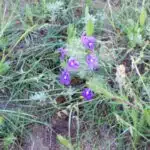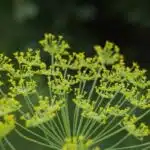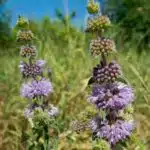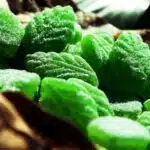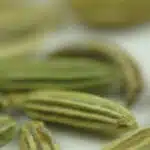Pineapple sage (Salvia elegans) is a herbaceous perennial plant that belongs to the mint family, Lamiaceae. It is native to Mexico and Guatemala and is known for its fragrant pineapple-like aroma, bright red tubular flowers, and attractive green leaves. Pineapple sage is a popular herb among gardeners because it is easy to grow and care for, making it an ideal addition to any herb garden.
In this article, we will explore the unique features of pineapple sage, including its growth requirements, care tips and potential uses in the kitchen. We will also discuss the health benefits associated with consuming pineapple sage as well as the various ways you can use this versatile herb in your cooking. If you are looking to enhance your gardening skills or expand your knowledge of herbs, read on to discover how to grow and care for pineapple sage.
An Introduction To Pineapple Sage
Pineapple sage, also known as Salvia elegans, is a perennial herb that belongs to the mint family. It is native to Mexico and Guatemala, where it grows in semi-arid environments. The plant has a distinct pineapple scent and flavor, which makes it popular for culinary applications.
Pineapple sage has several uses and benefits that make it an attractive addition to any garden. Apart from its culinary applications, it is also used for medicinal purposes. Some of its medicinal properties include anti-inflammatory, antioxidant, and antimicrobial properties. Additionally, it is used to treat digestive issues such as constipation and flatulence.
In the culinary world, pineapple sage is mostly used for seasoning dishes with its unique flavor. Its leaves are often added to fruit salads or used as a garnish on cocktails. Furthermore, it can be brewed into tea or added to syrups for use in desserts. Pineapple sage can also be dried and stored for later use in spice blends or marinades. In the subsequent section, we will explore the origins and characteristics of this fascinating plant.
Origins And Characteristics Of Pineapple Sage
Pineapple sage (Salvia elegans) is a herbaceous perennial plant that belongs to the mint family, Lamiaceae. It is native to Mexico, Central America, and South America, where it grows in the wild in mountainous regions at elevations of up to 8,000 feet. The plant was first introduced to Europe in the 17th century as an ornamental plant due to its striking red tubular flowers that bloom from late summer through fall. Interestingly, pineapple sage gets its name from the fruity aroma that emanates from its leaves when crushed or bruised.
Apart from being a beautiful flower that adds color to gardens, pineapple sage has numerous medicinal properties. Traditionally, it has been used in Mexican folk medicine as a treatment for anxiety and depression due to its calming effects on the central nervous system. Additionally, pineapple sage contains essential oils such as cineol and pinene that have antiseptic properties and can be used topically to treat minor cuts and wounds. Moreover, studies have shown that drinking an infusion made from pineapple sage leaves can help alleviate menstrual cramps and other menstrual-related symptoms.
In conclusion, understanding the origins and characteristics of pineapple sage is crucial for anyone who wants to grow this plant successfully. This herbaceous perennial has a long history of medicinal use in traditional Mexican medicine due to its calming effects on the central nervous system. Its essential oils also possess antiseptic properties that make it useful for treating minor cuts and wounds. In the next section, we will discuss how you can grow pineapple sage from seeds to enjoy these benefits firsthand.
Growing Pineapple Sage From Seeds
Pineapple sage is a delightful herb that can be grown in your garden, either as an ornamental plant or for culinary purposes. Growing pineapple sage from seeds is an easy and cost-effective way to get started. To start the process, you will need to plant the seeds indoors before transferring them to outdoor containers or garden beds.
Starting pineapple sage indoors requires a stratification period of up to 30 days, which means exposing the seeds to moist soil at low temperatures. After this period, you can sow the seeds in small pots filled with quality potting soil. Ensure that the soil is moist but not waterlogged and place the pots in a warm location with ample sunlight. Within two weeks, you should see tiny seedlings emerge from the soil.
Outdoor planting tips for pineapple sage involve selecting a sunny spot in your garden where there is well-draining soil. You can add organic matter such as compost or aged manure to improve soil fertility and retain moisture during dry spells. The ideal pH range for pineapple sage is between 6.0 and 7.0, so a slightly acidic soil will suit it best. Once your seedlings are mature enough (about four weeks old), harden them off by gradually exposing them to outdoor conditions before planting them in their permanent location.
| Pineapple Sage Care Tips | Description |
|---|---|
| Watering | Keep soil moist but not waterlogged |
| Fertilizing | Apply a balanced fertilizer every four weeks |
| Pruning | Trim back after flowering for bushy growth |
| Pest Control | Watch out for spider mites and aphids |
To ensure your pineapple sage thrives, it’s essential to give it proper care throughout its growth cycle. Some important care tips include frequent watering without overwatering, applying regular fertilization with a balanced fertilizer every month, pruning after flowering for bushy growth, and keeping an eye out for pests such as spider mites and aphids. By following these tips, you can enjoy a healthy and productive pineapple sage plant in your garden.
Transition: Now that you have successfully grown your pineapple sage from seeds, it’s time to learn how to propagate it through cuttings for future growth.
Propagating Pineapple Sage Through Cuttings
Let’s take the example of Jane, who recently purchased a pineapple sage plant, and wants to propagate it through cuttings. Pineapple sage is a beautiful herb that can be easily propagated through stem cuttings. This technique involves taking a stem cutting from the parent plant and rooting it in a new pot or planting bed.
Before propagating, ensure that the parent plant is healthy and disease-free. Select a stem that is about 4-5 inches long and has at least two nodes. Cut the stem just below the node using sterile pruning shears. Remove the lower leaves from the stem to prevent moisture loss and rooting hormone buildup. Dip the cut end of the stem into rooting hormone powder and tap off excess.
Place the cutting in moist soil or a rooting medium such as perlite or vermiculite. Keep it in indirect sunlight with high humidity, misting it regularly to keep it moist. Within three weeks, roots should begin to form, indicating successful propagation. Once rooted, transfer your new pineapple sage plant into a larger pot or planting bed following proper plant care tips like regular watering, fertilization, and pruning to promote healthy growth.
Now that you know how to propagate pineapple sage through cuttings let’s talk about its soil and sunlight requirements in the next section for optimum growth and health of this stunning herb.
Soil And Sunlight Requirements For Pineapple Sage
After propagating pineapple sage through cuttings, it is crucial to choose the right containers for growing and caring for them. One of the best containers for pineapple sage is a pot that is at least 8-12 inches deep and wide. The pot must have adequate drainage holes to prevent waterlogging and promote air circulation. Additionally, ensure that the container is made of porous material such as terracotta, which allows excess moisture to evaporate quickly.
Soil and sunlight requirements are also essential factors in growing and caring for pineapple sage. Pineapple sage thrives in well-drained soil that is rich in organic matter. It prefers full sun exposure but can tolerate partial shade in hot climates. However, if the plant receives insufficient sunlight, its growth will be stunted, resulting in poor foliage development and fewer flowers.
Propagation techniques for pineapple sage include both stem cuttings and seed sowing. Stem cuttings should be taken from healthy mature plants during early summer or spring when new growth appears. These cuttings should be at least four inches long with several nodes along the stem’s length. Once rooted, these cuttings can be transplanted into individual pots or directly into the garden bed after hardening off.
As important as it is to propagate pineapple sage correctly, watering and fertilizing are equally vital aspects of successful cultivation. Watering should be done regularly but moderately since overwatering can cause root rot or fungal diseases. Fertilizers rich in nitrogen can help to promote robust foliage growth but should not be applied excessively as they can lead to fewer flowers and weaker stems. In summary, proper care must be given to pineapple sage by providing optimal soil conditions, adequate sunlight exposure, regular watering with moderate fertilization – all leading to thriving plants with beautiful blooms throughout their growing season.
Watering And Fertilizing Pineapple Sage
When caring for Pineapple Sage, it is important to ensure adequate watering and fertilizing. Watering requirements should be regular and consistent to ensure the soil is kept moist but not soggy. A balanced fertilizer should be used occasionally to ensure the plant is receiving the necessary nutrients. Fertilizer should be applied at half-strength and not more than once a month.
Watering Requirements
As a plant care specialist, it is important to understand the watering requirements of pineapple sage. This herb thrives in well-drained soil that is kept consistently moist but not overly watered. Watering frequency will depend on the climate and season, as well as the soil moisture levels.
During hot and dry weather conditions, pineapple sage may require more frequent watering, while cooler and wetter seasons may require less frequent watering. It is important to monitor the soil moisture levels by checking the top inch of soil regularly. If it feels dry to the touch, it is time to water.
To ensure proper watering, use a watering can or hose with a gentle spray nozzle to water around the base of the plant. Avoid getting water on the leaves as this can lead to disease or fungal issues. With consistent attention to watering frequency and soil moisture levels, pineapple sage can thrive and produce an abundance of fragrant leaves for culinary use or decorative purposes.
Fertilizer Needs
As a plant care specialist, it is essential to understand the fertilization needs of pineapple sage. Fertilizers provide essential nutrients that promote healthy growth and development in plants. Organic and chemical fertilizers are the two primary types of fertilizers available on the market. Organic fertilizers are derived from natural sources such as animal manure, compost, or bone meal. Chemical fertilizers, on the other hand, are made from synthetic compounds.
Organic fertilizers are often preferred by gardeners due to their safety and sustainability. They release their nutrients slowly over time, providing a steady supply of nutrients to the plant. Organic fertilizers also help improve soil structure and fertility over time by increasing microbial activity in the soil. However, they may have a lower nutrient content than chemical fertilizers.
For indoor pineapple sage plants, organic fertilizers are recommended due to their safety and effectiveness. Some of the best organic fertilizers for indoor pineapple sage include fish emulsion, seaweed extract, and compost tea. These types of organic fertilizers provide a balanced blend of nutrients that support healthy growth without causing any harm to the plant or its environment.
Overall, understanding the fertilizer needs of pineapple sage is essential for its optimal growth and development. By choosing safe and effective organic fertilizers for indoor plants, you can ensure your pineapple sage thrives while minimizing any negative impact on the environment.
Pruning And Harvesting Pineapple Sage
Pruning techniques are crucial for promoting healthy growth and maintaining the shape of your pineapple sage plant. Regular pruning will prevent the plant from becoming unruly and leggy. The best time to prune is in early spring before new growth begins. Use sharp, clean shears to remove any dead or damaged branches, as well as any weak or crossing stems. For a bushier plant, pinch back the tips of young stems to encourage branching. Be sure not to remove more than one-third of the plant at any given time.
When it comes to harvesting pineapple sage, timing is key. The leaves are at their most flavorful just before the plant blooms in late summer or early fall. To harvest, simply cut off individual leaves as needed or trim entire stems back by a third. Rinse the leaves thoroughly in cool water and pat dry with a paper towel before using them fresh, drying them for later use, or freezing them for long-term storage.
Incorporating pruning techniques and following proper harvesting tips will promote healthy growth and ensure your pineapple sage plant remains productive for years to come. In the table below, we summarize some key tips for successful pruning and harvesting:
| Pruning Techniques | Harvesting Tips |
|---|---|
| Prune in early spring before new growth | Harvest just before blooming |
| Remove dead or damaged branches | Cut off individual leaves as needed |
| Pinch back tips of young stems for bushiness | Trim entire stems back by one-third |
| Do not remove more than one-third of plant at once | Rinse thoroughly in cool water |
Now that we’ve covered how to prune and harvest your pineapple sage, let’s move on to common pests and diseases that may affect this popular herb.
Common Pests And Diseases Of Pineapple Sage
According to a study conducted by the National Gardening Association, pests and diseases are among the top challenges faced by home gardeners. Pineapple sage plants are no exception to this challenge, as they can be susceptible to a variety of pests and diseases. Therefore, it is important for gardeners to be aware of these potential issues and take preventive measures to maintain healthy plants.
One common pest that affects pineapple sage is spider mites. These tiny insects feed on the sap of the plant and cause leaves to appear speckled or discolored. To prevent spider mites from infesting your pineapple sage, ensure that you keep the plant well-hydrated by watering regularly and misting the leaves occasionally. You can also use insecticidal soap or neem oil as treatment options if an infestation occurs.
Another disease that can affect pineapple sage is powdery mildew. This fungal infection appears as a white powdery coating on leaves and stems, ultimately leading to stunted growth and leaf drop. Prevention methods for powdery mildew include maintaining proper air circulation around the plant and avoiding overhead watering. Treatment options include spraying with a fungicide containing potassium bicarbonate or sulfur.
As a diligent gardener, being proactive in identifying potential problems with your pineapple sage plants will go a long way in ensuring their health and longevity. By taking necessary precautions such as using prevention methods like regular watering, misting leaves, maintaining air circulation around plants, amongst others; coupled with treatment options such as insecticidal soap or neem oil for spider mites infestations or spraying with fungicide containing potassium bicarbonate or sulfur for powdery mildew infections when necessary; you can protect your pineapple sage from common pests and diseases effectively.
Moving forward, companion planting is another useful technique used in gardening which has been known to benefit plants by creating mutually beneficial relationships between them. In the next section, we’ll explore some companion plants that can be grown alongside pineapple sage to enhance its growth and yield.
Companion Plants For Pineapple Sage
Companion planting is an excellent technique to maximize garden space and promote plant growth. By planting certain plants together, you can create a mutually beneficial relationship that will benefit both plants. Pineapple sage’s tall and vibrant red flowers make it a beautiful addition to any garden. Here are some companion plant suggestions that will help your pineapple sage thrive.
Firstly, pineapple sage pairs well with other herbs such as rosemary, thyme, and oregano. These herbs have similar growing requirements, including full sun exposure and well-draining soil. Additionally, they also attract pollinators such as bees and butterflies that can help increase the yield of your garden.
Secondly, marigolds are another excellent companion plant for pineapple sage. Marigolds release chemicals into the soil that repel pests such as nematodes, spider mites, and whiteflies. This helps protect your pineapple sage from pests without having to resort to chemical pesticides.
Lastly, pairing pineapple sage with vegetables such as tomatoes or peppers can be beneficial for both plants. These vegetables also require full sun exposure and well-draining soil but have different nutrient requirements than herbs. Pineapple sage can help attract pollinators that will increase the yield of your vegetables while the roots of the vegetables provide shade for the shallow roots of the pineapple sage.
In conclusion, companion planting is an excellent way to maximize garden space while promoting plant growth by creating a mutually beneficial relationship between plants. By choosing suitable companion plants for your pineapple sage such as other herbs like rosemary or marigolds to repel pests or even planting it near vegetables like tomatoes or peppers for increased yields, you can enjoy a thriving garden all season long. In the next section let us see how we can use this versatile herb in cooking!
Using Pineapple Sage In Cooking
As the saying goes, “variety is the spice of life”. Pineapple sage adds a unique and delightful flavor to any dish. Not only does it enhance savory dishes but it also brings a tropical twist to cocktails and desserts.
For those looking to add a little zing to their cocktail game, pineapple sage is the perfect ingredient for creating refreshing beverages. Simply muddle some fresh leaves with sugar and lime juice, then mix in rum and soda water for a deliciously fruity mojito. For a non-alcoholic option, infuse pineapple sage into lemonade or iced tea for an invigorating summer drink.
Pineapple sage’s sweet and citrusy flavor makes it an ideal herb for baking. Add chopped leaves to your favorite muffin or quick bread recipe for a burst of tropical flavor. It also pairs well with fruit-based desserts such as pies, tarts, and sorbets. For a simple yet elegant dessert, top grilled peaches with vanilla ice cream and sprinkle with chopped pineapple sage.
Transitioning from using pineapple sage in cooking to making tea is easy with this simple recipe that highlights its natural sweetness. Just steep fresh or dried leaves in hot water for five minutes before straining and sipping on this flavorful herbal tea that can be enjoyed hot or cold.
Pineapple Sage Tea Recipe
Pineapple sage is a versatile herb that can be used for various purposes. One of the most popular ways to use pineapple sage is by making tea. Pineapple sage tea is known for its fruity flavor and health benefits. To make pineapple sage tea, simply steep fresh or dried pineapple sage leaves in boiling water for 5-10 minutes. You can add honey or lemon to taste.
Aside from tea, pineapple sage can also be used in cocktails. Pineapple sage cocktail recipes are gaining popularity among mixologists and home bartenders because of the unique flavor it brings to drinks. The herb’s fruity and slightly spicy taste pairs well with rum, gin, and vodka-based cocktails. You can try making a pineapple sage mojito or a pineapple sage margarita for your next party.
Incorporating pineapple sage into your culinary creations is not only delicious but also beneficial to your health. Pineapple sage contains antioxidants and anti-inflammatory properties that help boost immunity and reduce inflammation in the body. So why not give this flavorful herb a try? In the next section, we will explore how to make pineapple-infused oil – another way to incorporate this herb into your daily routine!
Pineapple Sage Infused Oil Recipe
As mentioned earlier, pineapple sage is a versatile herb that can be used in various ways. One of its popular uses is in creating Pineapple Sage Infused Oil. This oil can be used for culinary purposes or as an ingredient in skincare products.
To make Pineapple Sage Infused Oil, you will need a few simple ingredients: fresh pineapple sage leaves and extra virgin olive oil. First, wash the leaves thoroughly to remove any dirt or debris. Then, gently bruise them by crushing them with your hands or using a mortar and pestle. Next, pour the olive oil into a clean glass jar and add the bruised leaves. Close the jar tightly and let it sit in a cool, dark place for about two weeks. After this time has passed, strain out the leaves and store the infused oil in another clean glass jar.
This Pineapple Sage Infused Oil has many uses. It can be used to create Pineapple Sage Bath Salts by adding epsom salt and a few drops of essential oils such as lavender or peppermint. Additionally, Pineapple Sage Essential Oil can be extracted from this infused oil through distillation methods. This essential oil has various benefits including anti-inflammatory properties and can be used to relieve stress or soothe sore muscles.
With Pineapple Sage’s versatility and benefits, there are countless creative ways to use it in everyday life. In the next section, we will explore another exciting recipe – Pineapple Sage Pesto Recipe – that showcases this herb’s unique flavor profile in a new way.
Pineapple Sage Pesto Recipe
Pineapple sage is a versatile herb that can be used in many culinary applications. One delicious way to incorporate pineapple sage into your cooking is by making a flavorful pesto sauce. Pineapple sage pesto offers a unique twist on traditional basil pesto and can be used in a variety of dishes.
To make pineapple sage pesto, start by harvesting fresh leaves from your pineapple sage plant. Rinse the leaves under cold water and pat them dry with a paper towel. In a food processor, combine the leaves with garlic, toasted pine nuts, grated parmesan cheese, and olive oil. Blend the ingredients until smooth and creamy. Use this tasty pesto as a spread for sandwiches or as a dip for vegetables.
There are many ways to vary the basic recipe for pineapple sage pesto to suit your taste preferences. For example, you can add other herbs like basil or cilantro for additional flavor layers. You can also substitute different nuts such as almonds or walnuts for the pine nuts to create different textures and tastes. Experiment with different combinations until you find the perfect blend that suits your palate.
Next section: Health Benefits of Pineapple Sage Pineapple sage not only offers delicious culinary uses but also has numerous health benefits that make it an excellent addition to any garden or kitchen.
Health Benefits Of Pineapple Sage
Ironically, the sweet aroma of pineapple sage is not just pleasing to our olfactory senses; it also packs a punch in terms of health benefits. Pineapple sage, known scientifically as Salvia Elegans, contains flavonoids that have been shown to boost immunity and reduce inflammation. This herb is a popular choice among horticulturists and plant enthusiasts due to its ease of care and ability to thrive in various climates.
Aside from its medicinal properties, pineapple sage is also commonly used in aromatherapy. The essential oil extracted from its leaves has been found to possess antifungal and antibacterial properties. Its unique scent can help soothe anxiety, promote relaxation, and improve mental clarity. It is also a great addition to massage oils or bath salts.
Incorporating pineapple sage into your daily routine can be beneficial for both physical and mental well-being. Its versatility makes it an excellent choice for those who are looking for natural remedies or simply want to add some flavor to their dishes or teas. Check out the table below for a quick summary of the health benefits of pineapple sage:
| Health Benefits | Description |
|---|---|
| Boosts immunity | Contains flavonoids that increase resistance against infections |
| Reduces inflammation | Helps alleviate symptoms of rheumatoid arthritis |
| Antifungal & Antibacterial | Essential oil has therapeutic properties that combat fungal and bacterial infections |
As we have seen, pineapple sage is more than just a fragrant herb that adds depth to culinary dishes; it has numerous health benefits that make it an essential addition to any garden or kitchen. Whether you choose to use it in aromatherapy or as a seasoning for your meals, incorporating this herb into your routine will undoubtedly provide you with numerous benefits. In the next section, we will discuss how you can grow and care for pineapple sage so that you can reap these benefits all year round!
Conclusion: Growing And Caring For Pineapple Sage
As we have previously discussed, pineapple sage is a herb that has several health benefits due to its high levels of antioxidants and anti-inflammatory compounds. However, this herb can also be grown and cared for in your own backyard or even indoors through container gardening.
Container gardening is an excellent way to grow pineapple sage, especially if you don’t have ample outdoor space. Ensure that the container is large enough to accommodate the plant’s growth and has proper drainage. Pineapple sage thrives in well-draining soil with a pH of 6.0-7.0 and requires full sun exposure.
During winter months, pineapple sage may require some special care to survive. If you live in a region with harsh winters, it’s best to bring your container-grown pineapple sage indoors before the first frost. Place it near a south-facing window where it can still receive full sun exposure. Reduce watering frequency during this time but ensure the soil doesn’t dry out completely.
By following these simple tips, you can enjoy fresh pineapple sage all year round while simultaneously reaping its numerous health benefits. With just a little bit of care, this herb can be an excellent addition to any garden or indoor space.
Frequently Asked Questions
Can Pineapple Sage Be Grown Indoors?
Indoor gardening has become increasingly popular as people look for ways to incorporate greenery into their living spaces. For those interested in herb containerization, the question of whether pineapple sage can be grown indoors is a common one. As a horticultural expert, it is important to note that while pineapple sage can be grown in containers, it requires a lot of light and space to thrive. Therefore, it may not be the best choice for indoor gardening unless you have ample natural light or invest in grow lights. Additionally, proper care and maintenance are crucial for pineapple sage to flourish indoors. This includes regular watering, fertilization, and pruning to promote healthy growth. Overall, while pineapple sage can be grown indoors with the proper conditions and care, it may not be the easiest herb to cultivate in an indoor setting.
Is Pineapple Sage Safe For Pets To Consume?
Pineapple sage, also known as Salvia elegans, is a popular plant loved for its delicious aroma and taste. However, pet owners may wonder whether it is safe for their furry friends to consume. While pineapple sage has many health benefits for humans, such as being high in antioxidants and having anti-inflammatory properties, it can be harmful to pets if ingested in large quantities. The plant contains essential oils that can cause digestive issues, vomiting, and diarrhea in cats and dogs. Therefore, it’s best to keep pineapple sage out of reach of pets or opt for pet-friendly herbs instead. As a horticultural expert or plant care specialist, it’s important to educate people on the potential dangers of certain plants and promote responsible gardening practices that consider the safety of all household members, including our beloved pets.
How Often Should Pineapple Sage Be Fertilized?
Pineapple sage requires a well-draining soil that is rich in nutrients. Fertilizer frequency depends on the type of fertilizer being used and the quality of the soil, but generally, pineapple sage should be fertilized every four to six weeks during the growing season. It is important to avoid over-fertilizing as this can lead to excessive foliage growth and reduced flowering. A balanced fertilizer with equal parts nitrogen, phosphorus, and potassium is recommended for optimal growth. Applying compost or organic matter to the soil can also improve its nutrient content and reduce the need for synthetic fertilizers. By providing adequate soil nutrients through proper fertilization practices, pineapple sage can thrive and provide an aromatic addition to any garden or landscape setting.
Can Pineapple Sage Be Used As A Natural Insect Repellent?
Pineapple sage, also known as Salvia elegans, is a herb that can be used as a natural insect repellent. It is effective against certain pests such as mosquitoes and whiteflies due to its strong aroma. Companion planting pineapple sage with other plants can enhance its insect-repelling properties. For example, planting pineapple sage alongside tomatoes can help deter tomato hornworms. However, it is important to note that while pineapple sage may repel some insects, it may attract others such as bees and butterflies which are important pollinators for many plants. It is recommended to plant pineapple sage strategically and not rely solely on it as an insect repellent.
What Is The Best Time Of Year To Harvest Pineapple Sage?
The best time of year to harvest pineapple sage is during the late summer or early fall when the plant has reached maturity. To ensure optimal flavor and aroma, it’s important to use proper harvesting techniques. Harvesting should be done in the morning after the dew has dried but before the sun is too high in the sky. To preserve pineapple sage, it can be dried by hanging upside down in a cool, dry place for several days or frozen in an airtight container after being chopped finely. Properly harvested and preserved pineapple sage can add a unique and delicious flavor to many dishes and beverages.
Conclusion
Pineapple sage is a beautiful and fragrant herb that can be grown both indoors and outdoors. It is safe for pets to consume, making it an excellent addition to any pet-friendly garden. Pineapple sage should be fertilized every four to six weeks during the growing season, with a balanced fertilizer.
Pineapple sage has natural insect-repelling properties, making it an excellent choice for organic gardening. It can repel pests such as mosquitoes, aphids, and spider mites. The best time of year to harvest pineapple sage is in late summer or early fall when the plant is at its peak flavor.
According to recent studies, pineapple sage has been found to have anti-inflammatory properties due to its high content of rosmarinic acid. This makes it not only a delicious herb but also a valuable medicinal plant. As a horticultural expert or plant care specialist, I highly recommend adding this versatile herb to your garden or indoor space. With proper care and attention, pineapple sage can thrive and provide numerous benefits for you and your family.
Image Credits
- “Pineapple Sage, Lemon Balm, Lemon Zest and Coconut Shortbreads” by yummysmellsca (featured)




